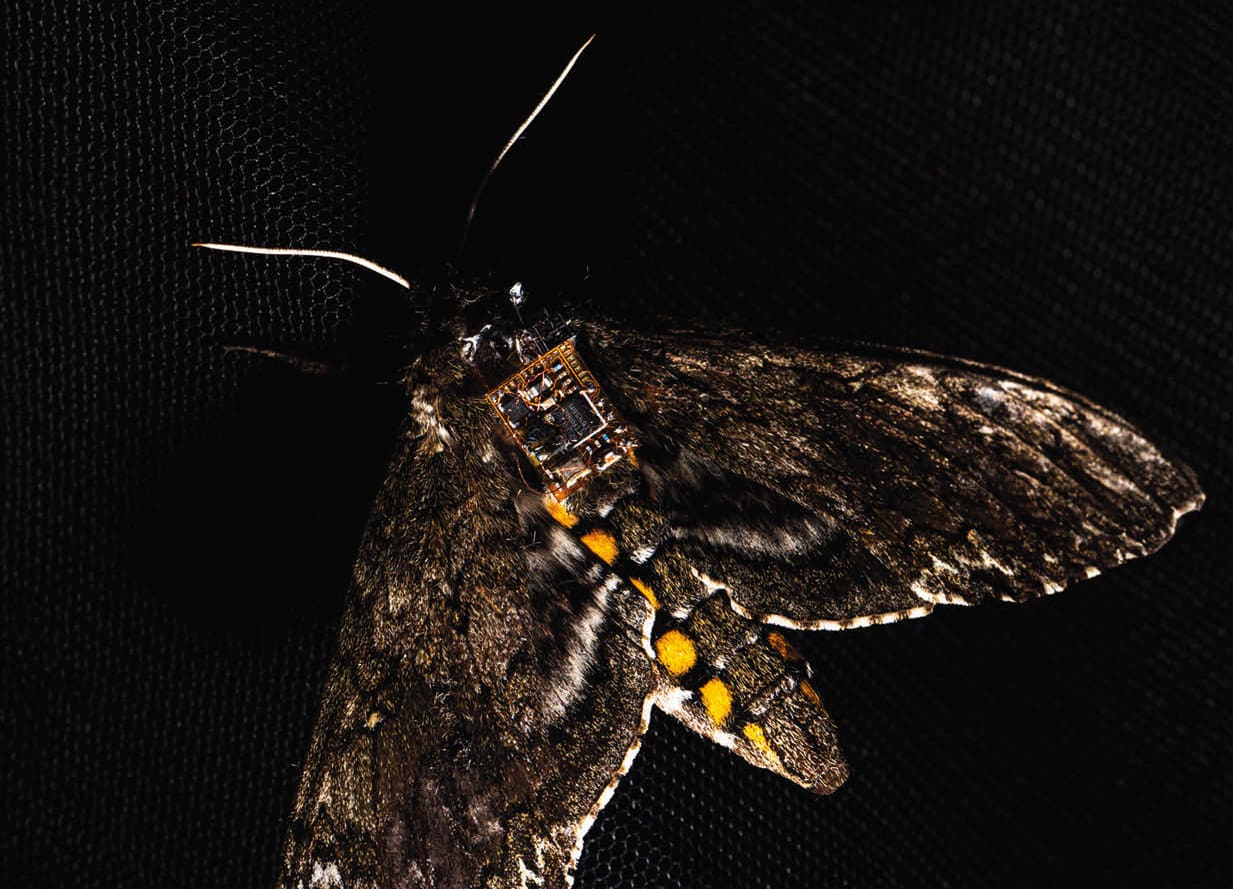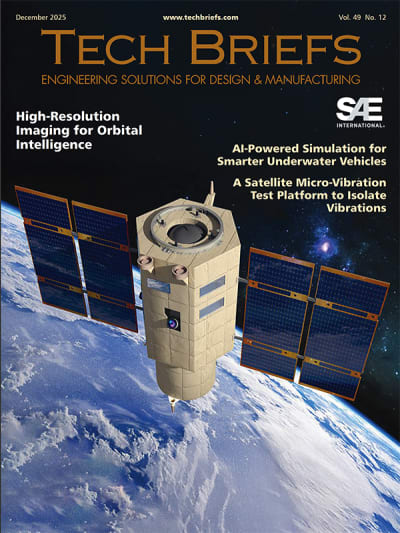
Researchers have created a 98-milligram sensor system — about one tenth the weight of a jellybean or less than one-hundredth of an ounce — that can ride aboard a small drone or an insect, such as a moth, until it gets to its destination. Then, when a researcher sends a Bluetooth command, the sensor is released from its perch and can fall up to 72 feet — from about the sixth floor of a building — and land without breaking. Once on the ground, the sensor can collect data, such as temperature or humidity, for almost three years.

Designed to map out conditions in regions that are too small or too dangerous for a person to go, the sensors can traverse through narrow spaces easier than drones and sustain much longer flights.
While industrial-sized drones use grippers to carry their payloads, the sensor is held on the drone or insect using a magnetic pin surrounded by a thin coil of wire. To release the sensor, a researcher on the ground sends a wireless command that creates a current through the coil to generate a magnetic field. The magnetic field makes the magnetic pin pop out of place and sends the sensor on its way.
The sensor was designed with its battery, the heaviest part, in one corner. As the sensor falls, it begins rotating around the corner with the battery, generating additional drag force and slowing its descent. That, combined with the sensor’s low weight, keeps its maximum fall speed at around 11 miles per hour, allowing the sensor to hit the ground safely.
The researchers envision using this system to create a sensor network within a study area; for example, they could use drones or insects to scatter sensors across a forest or farm that they want to monitor. Once a mechanism is developed to recover sensors after their batteries have died, the team expects their system could be used in a wide variety of locations including environmentally sensitive areas. They plan to replace the battery with a solar cell and automate sensor deployment in industrial settings.
For more information, contact Sarah McQuate at

